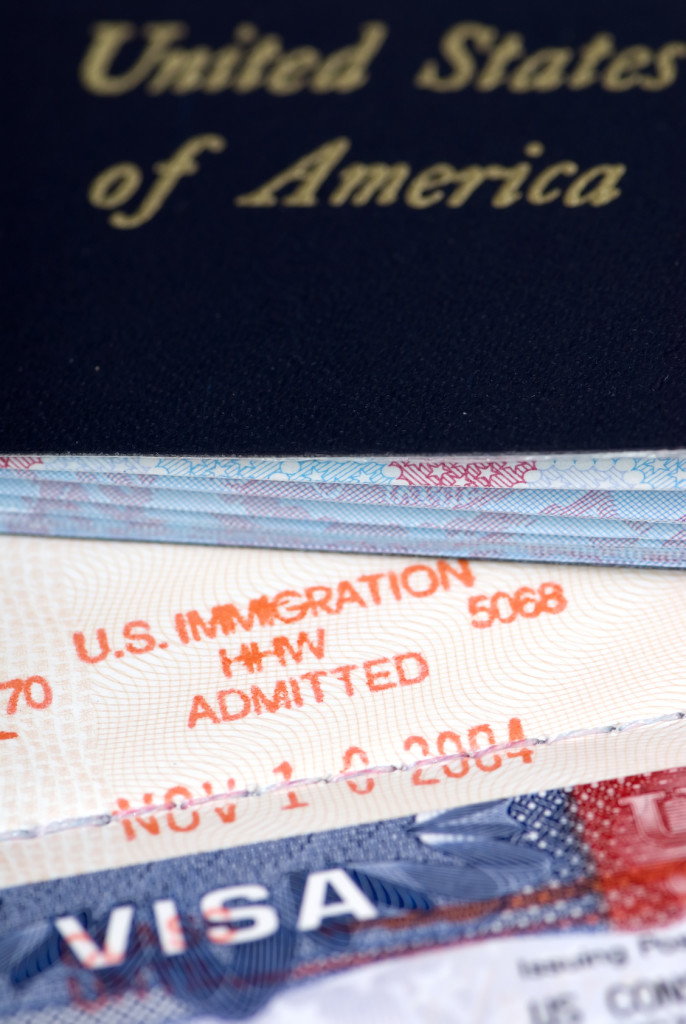
Professional Immigration Consultant Breaks-down The Fiancee Visa Vetting Process So That We Can Better Understand How A Terrorist Was Given An American Visa.
There’s been quite a bit of news reporting about vetting of K-1 visa applicants, since the mass shooting in San Bernardino, California, by a US Citizen who brought his wife to the USA using the K-1 visa process. However, the vetting process for the K-1 visa, is essentially the same as for a spouse visa or any other category of US “Immigrant Visa”.
Although the K-1 (or K-2 for child) visas are technically non-immigrant visas, because they allow the K-1 visa holder to adjust status to Lawful Permanent Resident, (to immigrate) after marrying the US Citizen who Petitioned for them, they are handled by the Immigrant Visa Units, at US Consulates or Embassies abroad. As such, they receive the same vetting process as any intending immigrant applying for an immigrant visa.

For K-1 visa (fiancé or fiancée) visa applicant from the vast majority of countries, the “vetting” is limited to submitting an official Police Report from any country in which they have actually resided for more than six months since reaching age 16, plus the questions they answer on their biographical form G-325a, submitted to USCIS (United States Citizenship and Immigration Services) and on their DS-160 visa application submitted online, to the Department of State’s Immigrant Visa Unit.
USCIS, does do name checks on both the US Citizen Petitioner and the K-1 visa applicant, through available databases, prior to approving the petition, but in most cases, no information is available in those databases, regarding the foreign visa applicant.
Security Checks
Since shortly after September 11, 2001 however, some K-1 visa applicants who are Citizens or Residents of a list of countries from which the risk of the applicant being a terrorist is high, have been subjected to additional, extensive and expensive security checks, only after their visa interview is complete.
The State Department keeps the exact nature and extent of these additional security checks to themselves, but the often include visits to neighbors and relatives, and other common human intelligence investigation methods, on the ground, in country. Often the K-1 visa applicant waits from several weeks, to several months or sometimes a year or more after their visa interview waiting for this Security Check, so called “Administrative Processing” to be completed.
 The State Department, undertakes these security checks for nearly all male visa applicants applying through the Immigrant Visa Unit but a female is less likely to undergo this process. Specifically, a Pakistani woman is quite unlikely to be vetted using this “Administrative Processing” after her visa interview.
The State Department, undertakes these security checks for nearly all male visa applicants applying through the Immigrant Visa Unit but a female is less likely to undergo this process. Specifically, a Pakistani woman is quite unlikely to be vetted using this “Administrative Processing” after her visa interview.
The Media’s Take On The Vetting Process And How We Get Our Answer.
If you are reading or listening to news reports, it is important to note that the vetting process described above has been in place since, 2001. It was not put in place by or during the Obama administration or Hillary Clinton, while Secretary of State. Mrs. Clinton, and Secretary Carey, under the Obama administration had or have Executive authority over the State Department and Consular Services, and may have implemented changes in the details of or extent to which these security checks have been used, but not in such a way that this immigration professional has noticed.
Was The Female Terrorist Involved In The San Bernardino, CA Attack Fully Vetted?
News organizations may want to dig into details, as to whether the female terrorist involved in the San Bernardino, CA attack was fully vetted in this way. How do we get the answer? One would only need to know the date of the interview, as compared to the date of visa issue to know whether she was vetted through the so called “Administrative Processing” round of security checks. If her visa was issued a few days, rather than a few weeks or months after her interview date, these security checks were not completed, in her case.
